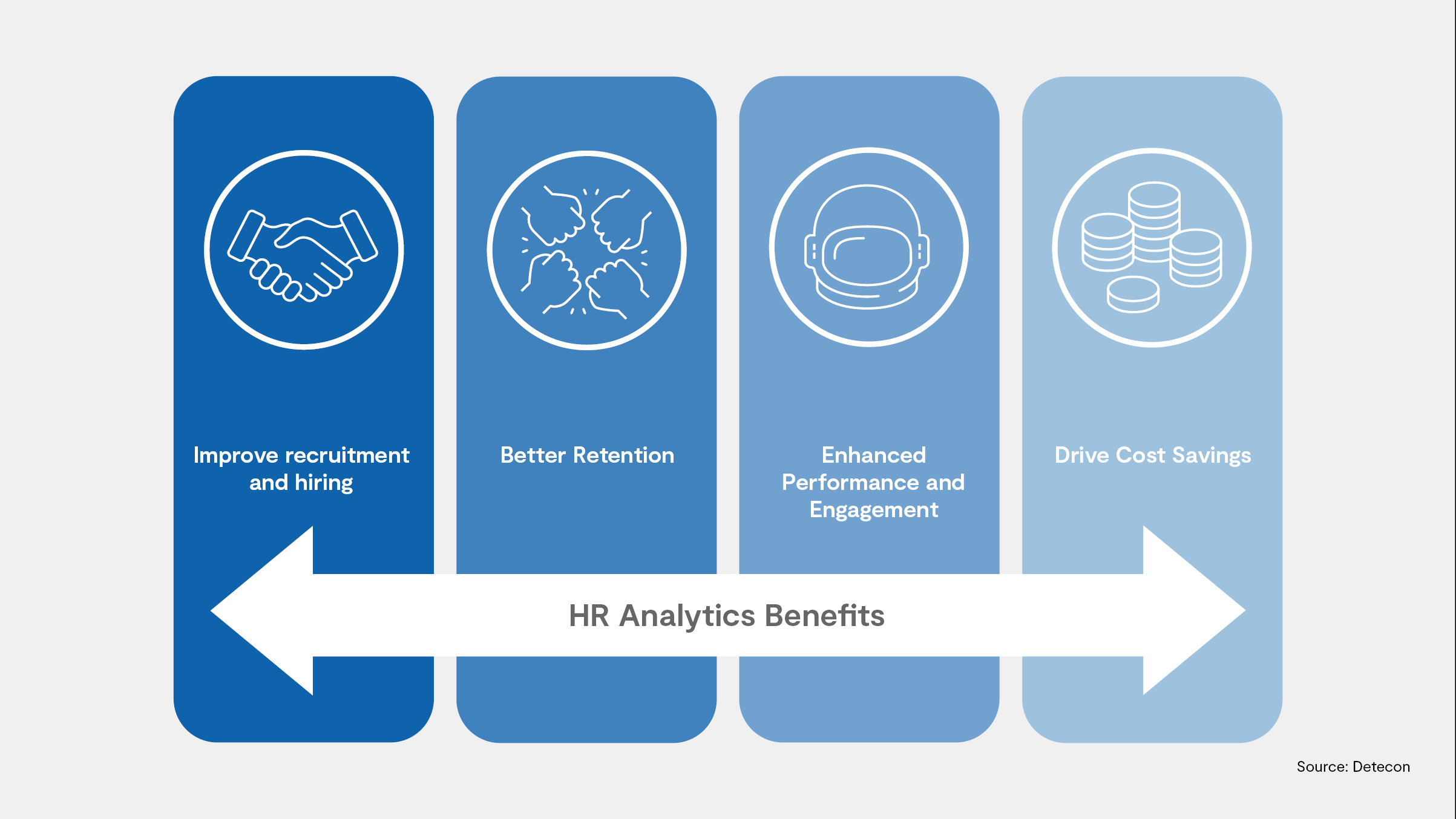Technology is also a driver of disruptive developments in HR. Many HR processes are already automated. The potential of HR analytics, data-driven HR work, is still relatively new. Data and algorithms allow for quick and reliable identification of areas for improvement and support decision-making from recruiting to HR development. HR is thus perfectly positioned for a hyper-connected future. Sounds too good? Our expert Fariduni Saidzoda gives an overview.
Human Resources (HR) Analytics, also known as People Analytics, is currently revolutionising HR. Organisations face various HR challenges, such as high employee turnover, inefficient recruitment processes, skills gaps, low employee retention, ineffective performance management and compliance risks. This can create problems that negatively impact business results and affect organisational efficiency and productivity.
To address these challenges and bring about positive change, HR analytics can provide critical momentum. Through the use of data and analytics, HR can gain comprehensive insights, make informed decisions and optimise HR practices.
How to benefit from HR Analytics
HR analytics offers numerous benefits to companies, including:
Improve recruitment and hiring: By analyzing data on previous recruitment efforts, HR teams can identify the traits and characteristics of top-performing employees and use that information to improve recruitment strategies as well as capture sources and methods which have been most effective in finding quality candidates.
Better Retention: HR analytics can help identify factors that contribute to employee turnover, such as low job satisfaction or inadequate compensation. Armed with this information, HR professionals can implement targeted interventions to improve retention and reduce the costs associated with turnover.
Enhanced Performance and Engagement: By analyzing employee data, HR professionals can identify patterns and trends that are impacting employee performance, such as lack of training or inadequate communication. With this information, they can develop targeted training and development programs to address performance issues and enhance employee productivity.
Drive Cost Savings: By leveraging HR analytics to identify inefficiencies in HR processes and analyzing data on employee engagement, HR teams can take steps to improve engagement, increase workforce productivity, reduce recruitment, training, and turnover costs, and ultimately optimize HR processes to save money on lost productivity and recruitment costs.

What are the challenges of HR Analytics?
Despite the benefits of HR analytics, there are also several challenges associated with implementing and utilizing this approach. These challenges include:
Data Quality and siloed data sources: As all other data-driven reports, HR analytics relies also on accurate and reliable data. However, HR analytics can be limited in its effectiveness due to incomplete, outdated, or inconsistent HR data, which is sometimes stored in incompatible, siloed systems.
Data Privacy and Security: HR data often contains sensitive information, such as account number, employee salaries and performance evaluations. Organizations must ensure that this data is secure and that privacy laws are followed.
Limited Expertise and Big Data: HR professionals may lack the necessary expertise and technical skills to effectively collect and analyze HR data. Due to the large volume of data involved, external experts are often required to handle it effectively.
Resistance to Change: Implementing HR analytics often requires changes to existing HR processes and systems. Some employees may be resistant to these changes, which can hinder the adoption and effectiveness of HR analytics.
Implementation of HR Analytics is linked to prerequisites
In order for HR analytics to be used successfully in the company, some prerequisites must be observed:
Identify the business objectives: It is important that HR analytics align with the overall business objectives of the organisation. In particular, identify the areas where data-driven decision-making can have the greatest impact on business outcomes. By aligning HR analytics with business goals, you can make informed decisions that drive business success.
ETL process management: ETL (Extract, Transform, Load) is a critical process for organisations that need to integrate data from multiple sources for analytics and reporting. Managing this efficiently is highly relevant when integrating data from different sources efficiently.
Automation of reporting: HR Analytics thrives on the implementation of advanced technologies like Power BI to automate reporting. Automated reporting saves time and resources while reducing manual errors, improving the accuracy of reports.
Monitor and use: Data and its use must become the norm. Only then will you realise the potential of data-driven decisions to optimise your HR processes.
HR Analytcis: Being the decisive step ahead
HR analytics is, in our view, a powerful tool that can change the world of HR. By using data to make decisions, HR teams can improve employee performance, reduce costs and optimise the overall employee experience. The prerequisite is a strategically thought-out use as well as a focus on business goals. With the right approach, HR analytics can bring not only HR, but the entire organisation a decisive data-driven step forward.







